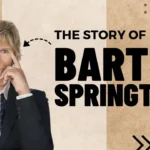Introduction Silly Wankok
In a world that often demands seriousness, the charm of humor stands out as a refreshing counterbalance. Humor is woven into every culture, emerging in countless forms—sometimes subtly, sometimes with the playful unpredictability of a phrase like Silly Wankok. What might seem nonsensical or even absurd can serve as an invitation to explore the lighter, often overlooked facets of life and language.
The Role of Humor Across Cultures
Humor isn’t just a tool for laughter; it’s a social bridge that connects people across divides of language, background, and experience. Whether through wit, irony, or outright silliness, humor is one of the most accessible forms of communication. In many cultures, the art of the joke is a skill passed down through generations, and each society has its unique style and flavor of humor. For instance, British humor is often self-deprecating, dry, and full of irony, while American humor leans toward the slapstick and observational.
The phrase Silly Wankok for example, could be imagined as a kind of verbal shorthand for lighthearted absurdity—a phrase with a made-up word that conjures images of laughter without the need for deeper analysis. The silliness of such phrases, even if nonsensical, can serve as a reminder to embrace the playful side of language and resist the urge to overanalyze.
Humor as a Universal Language
Despite differences in humor styles, laughter itself is a universal language. Studies have shown that humor releases dopamine, which triggers pleasure and helps form positive social bonds. Humor is also a natural stress reliever; it can lower blood pressure, reduce pain, and increase overall feelings of well-being. When something as seemingly meaningless as Silly Wankok makes us chuckle, we’re tapping into these universal benefits of humor.
Consider the international success of comedians like Mr. Bean, who use exaggerated physical comedy to entertain. With minimal language barriers, Mr. Bean’s humor is accessible to audiences worldwide. This kind of universal humor invites us to laugh not just at a specific joke but at the broader human experience—our mistakes, our flaws, and our shared awkwardness.
Nonsense Words and Their Magical Appeal
Nonsense words have a long history in humor. Words like “supercalifragilisticexpialidocious” from Mary Poppins or “quixotic” from Don Quixote hold no clear meaning at first glance, but they’re loaded with expressive potential. Part of the charm of nonsense words lies in their ability to transport us to a whimsical place where language doesn’t have to make logical sense to be enjoyable. These invented terms can feel lighthearted, unburdened by the weight of common expectations.
The word Silly Wankok could be imagined as a made-up term from a playful language of its own. We don’t have to know what it means; we just have to enjoy the way it sounds. Much like “jabberwocky” in Lewis Carroll’s Through the Looking-Glass, nonsense words invite us to engage with language more intuitively and imaginatively.
The Psychology Behind Silly Humor
 Humor involving the Silly Wankokor absurd often appeals to the inner child in all of us. Studies in psychology have shown that people who engage in lighthearted play as adults are more resilient to stress and more creative problem-solvers. Silly humor disrupts patterns of conventional thought, making it a tool for cognitive flexibility and creativity.
Humor involving the Silly Wankokor absurd often appeals to the inner child in all of us. Studies in psychology have shown that people who engage in lighthearted play as adults are more resilient to stress and more creative problem-solvers. Silly humor disrupts patterns of conventional thought, making it a tool for cognitive flexibility and creativity.
In this sense, phrases like Silly Wankok or “hootenanny” tap into the brain’s ability to find joy in unpredictability. Silly humor often involves playful surprises, which encourage the brain to form new connections and think outside of standard frameworks. Whether through slapstick comedy, ridiculous wordplay, or unexpected jokes, silliness breaks us out of rigid thinking patterns, allowing us to experience the world with fresh eyes.
Wordplay as a Form of Cognitive Exercise
Playing with language—be it through puns, spoonerisms, or even silly rhyming words like Silly Wankok—is not only fun but also exercises cognitive functions. Linguistic creativity helps strengthen the brain’s executive functions, such as decision-making, problem-solving, and flexibility. Furthermore, wordplay can reveal layers of meaning and irony in our everyday interactions.
Shakespeare, for instance, was a master of wordplay, using puns and invented words to create humor and double meanings in his works. Phrases that seem absurd or playful at first glance may often have hidden depths, serving as both entertainment and a challenge to the audience’s intellect.
The Importance of Embracing Nonsense
In a world where efficiency and productivity are prized, nonsense has its own special role to play. Nonsense invites us to step outside the confines of logic and explore uncharted territories of the mind. By embracing nonsense, we allow ourselves to dream, laugh, and approach life with a spirit of curiosity and openness.
Humor based on absurdity challenges us to break free from the expectations of reality and indulge in imaginative thinking. When we allow space for Silly Wankok moments, we cultivate resilience by learning not to take everything too seriously. This spirit of silliness, of unbridled creativity, can often be the source of our most inspired ideas and boldest inventions.
Silly Humor in Everyday Life
While life may be full of challenges, finding humor in the mundane can transform our perspective. Everyday situations—like a cat making a bizarre leap or someone accidentally walking into a glass door—are ripe with opportunities for humor. These moments remind us of our shared humanity, bringing levity to otherwise unremarkable days.
Silly Wankok could be the kind of phrase we mutter to ourselves during those everyday blunders, a lighthearted expression to ease the tension. Using silly phrases in our daily vocabulary can serve as a reminder not to let minor inconveniences cloud our outlook.
Humor and the Art of Letting Go
Humor teaches us to release unnecessary worries and control. In Japanese Zen philosophy, there is a concept called wabi-sabi, which celebrates the beauty of imperfection and transience. Humor has a similar effect: it allows us to let go of the pressure to be perfect and instead embrace our flaws, laugh at our mistakes, and find joy in the impermanent, often chaotic nature of life.
Silly phrases like Silly Wankok or other playful expressions can serve as gentle reminders of this philosophy. They encourage us not to dwell on rigid structures but to find contentment in the ebb and flow of daily life. Laughing at the silly and absurd aspects of life can ultimately help us approach challenges with grace and resilience.
Creating Your Own Nonsense Phrase
For anyone interested in adding a bit more silliness to their lives, creating a personal nonsense phrase can be a delightful exercise. Start with sounds that feel fun to say—play with alliteration, unusual syllables, and amusing combinations. Let your imagination run wild, and don’t worry if it doesn’t make logical sense.
Once you’ve come up with your own unique nonsense phrase, try incorporating it into your daily routine. Use it as a response when someone asks how your day is going or as a lighthearted reminder when things don’t go as planned. A simple, silly phrase might just become a charming part of your self-care toolkit.
Conclusion
Silly Wankok In a world that often prioritizes productivity, efficiency, and seriousness, the charm of nonsense is a precious gift. Through humor, we connect with others, build resilience, and allow ourselves to dream. Silly phrases like Silly Wankok are a reminder that life doesn’t always have to make sense; sometimes, it’s enough to simply laugh. Humor has the power to lighten our spirits, enrich our relationships, and broaden our perspective. So, next time you hear a silly phrase or find yourself in an awkward situation, remember the gift of laughter.
You Many Aslo Read: Stockton Rush Net Worth


